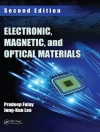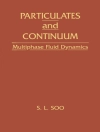This book comprises select peer-reviewed proceedings of the 9th International and 49th National Conference on Fluid Mechanics and Fluid Power (FMFP 2022). This book brings together scientific ideas and engineering solutions put forth by researchers and practitioners from academia and industry in the important and ubiquitous field of fluid mechanics. The contents of this book focus on fundamental issues and perspective in fluid mechanics, measurement techniques in fluid mechanics, computational fluid and gas dynamics, instability, transition and turbulence, fluid-structure interaction, multiphase flows, microfluidics, bio-inspired fluid mechanics, aerodynamics, turbomachinery, propulsion and power and other miscellaneous topics in the broad domain of fluid mechanics. This book is a useful reference to researchers and professionals working in the broad field of mechanics.
Inhaltsverzeichnis
Part 1: Miscellaneous.- Chapter 1. Linear and nonlinear simulations of magnetorotational instability for the upcoming DRESDYN-MRI experiment.- Chapter 2. Estimation of inlet conditions of fluid flow in a thick pipe using inverse technique.- Chapter 3. Effect of Hierarchical Porous Media on Specific Capacity and Energy Density of Li-O2 Battery.- Chapter 4. Velocity measurement for low Hartmann magneto-convection on a vertical wall using UDV.- Chapter 5. Novel Tree-Branching Microchannel Heat Sink Under Variable and Constant Fluid Volume Approaches.- Chapter 6. Effect of flexible flap length on flow generation by an airfoil pitching in quiescent fluid.- Chapter 7. Aerodynamic Characterisation of a Winged Re Entry Vehicle at Select Mach Numbers and Angles of Attack through CFD Simulations.- Chapter 8. Large Eddy Simulations (LES) of Supercritical Nitrogen Jets.- Chapter 9. Design of Rolling Road for Wind Tunnel Simulation.- Chapter 10. Multi-Needle Ionic Wind Generator for Thermal Management.- Chapter 11. Entrainment characteristics of a swirling liquid jet.- Chapter 12. Estimation of drag behind a tapered cylinder using Direct Drag Measurement.- Chapter 13. Effect of damping on bifurcation and synchronization behaviour of an aeroelastic system under dynamic stall.- Chapter 14. Development of a Coupled RANS-LES Solver for Numerical Simulation of Turbulent Wall Bounded Flows.- Chapter 15. Computational and Experimental study of particle dispersion in the turbulent wake of a simplified car model (Ahmed body). etc.
Über den Autor
Prof. Krishna Mohan Singh is Professor in the Department of Mechanical and Industrial Engineering at Indian Institute of Technology (IIT) Roorkee. His research interests include the areas of computational mechanics, development of novel parallel algorithms, meshfree methods, shape and topology optimization, fluid dynamics, DNS/LES of turbulent flows, CAE, computer-aided analysis and design of thermo-fluid and multi-physics systems, computational fluid dynamics, modeling and simulation of flow and heat transfer in turbomachines, transport and energy systems.
Prof. Sushanta Dutta is Professor in the Department of Mechanical and Industrial Engineering at Indian Institute of Technology (IIT) Roorkee. His research interests are in the areas of experimental fluid mechanics, experimental heat transfer, optical measurement techniques, active and passive control of flow field, wake dynamics, turbulence study, Schlieren, HWA, PIV, LCT, PSP, microfluidics and heat transfer augmentation using phase change material.
Prof. Sudhakar Subudhi is Associate Professor in the Department of Mechanical and Industrial Engineering at Indian Institute of Technology (IIT) Roorkee. His research interests are in the area of experimental heat transfer and fluid mechanics, heat transfer enhancement of natural and forced convection in water/nanofluids, natural ventilation and unconventional energy systems.
Dr. Nikhil Kumar Singh is Assistant Professor in the Department of Mechanical and Industrial Engineering at Indian Institute of Technology (IIT) Roorkee. His broad research interests include direct numerical simulations of two-phase flows and phase change, computational fluid dynamics and heat transfer, numerical methods and turbulent flows.












